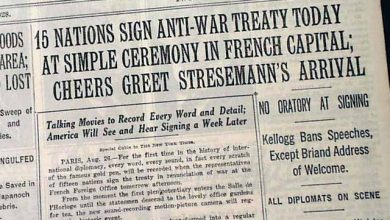Uncategorized
The North-South Division of Korea: A History
Korea has been divided at the heart for ages. The tension between North and South Korea is palpable, and it can be traced back to a war that took place from 1950 to 1953.
The division between North Korea and South Korea frequently makes its way to international headlines. With a looming nuclear threat from the North, and a seeming cohesive democratic process form the South, the division of a once unified country seems confusing for most. Although the two share a common language, history and heritage, the past between the two makes reconciliation unimaginable.
One reason these two countries remain relatively unfriendly with each other is because they are still legally at war. This occurrence is a result of the status quo from the Korean war, which resulted in a stalemate between the two. Officially, the division of Korea began on June 25, 1950. The communist army from North Korea crossed into South Korea attempting seize Seoul, which happened in three days. At the time, the Americans lent support to the South, and Beijing was the power behind the North.
The three-year war claimed many lives across borders just as any war would. Somewhere between two to four million people died as a result. Koreans, Chinese, US soldiers, and nonmilitary civilians lost their lives. These two countries finally signed an armistice on July 27, 1953. The Korean Demilitarized Zone (DMZ) is established near the 38th parallel, but its establishment did not technically resolve the conflict.
Since the signing of the armistice, there have been various military infiltrations on each side, which is a serious security concern for both of the Koreas. Those confrontations could mean the beginning of another war.
The following are examples of those confrontations:
January 21, 1968: 31 North Koreans soldiers are sent into Seoul. Their purpose was to kill President Park Chung Hee, but thankfully the South Korean security killed almost all of them except two.
August 18, 1976: Soldiers from the North attacked a work party that was simply trying to chop down a tree in the DMZ. Two US army officers were killed during the confrontation that was coined the “axe murder incident.”
October 9, 1953: Another attempt on a South Korean President was initiated. This time the attack was launched against President Chun Doo Hwan and began when President Hwan visited Yangon, Myanmar. A bomb was planted in the mausoleum, but he survived the attack though 21 other people were killed.
November 29, 1987: A bomb on a Korean Air flight kills 115 people. Everyone blamed Pyongyang but this was denied.
September 18, 1996: North Korean submarine tries to run aground in South Korea. The infiltrators are killed after a 45-day manhunt.
June 15, 1999: Both South and North Korean naval ships are involved in a confrontation near the Yeonpyeong island. 50 North Koreans lose their lives.
March 26, 2010: A South Korean corvette sinks. 46 sailors died, and an investigation is launched that concluded these people were killed by a torpedo from North Korea, but the country denies it again.
November 23, 2010: 170 shells are fired into a popular area filled with people in South Korea. The shots came from North Korea, and South Korea responds with a cannon. Two civilians were killed.
August 20, 2015: Shots are fired against each other.
It should be pointed out that North Korea has attempted to become a nuclear power for some time. It wants the power to hit Japan, South Korea, and the United States. Countries are taking this country seriously, especially after a successful nuclear test back in October 2006.
In 2017, more tests from the country were launched, and this was paired with ongoing dialogue between President Donald Trump and Kim Jong-Un. Tensions are definitely high after these two begin their war of words, but Kim Jong-Un’s wish to participate in the Winter Olympics in 2018 in the South gave the world hope of a unified Korea once again.




